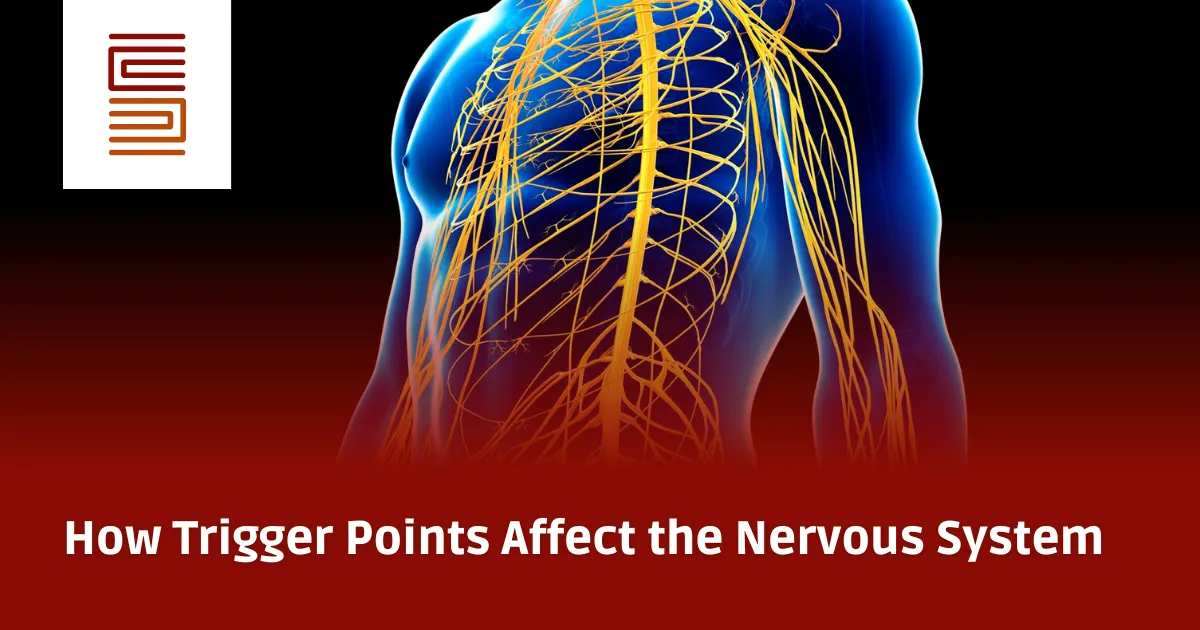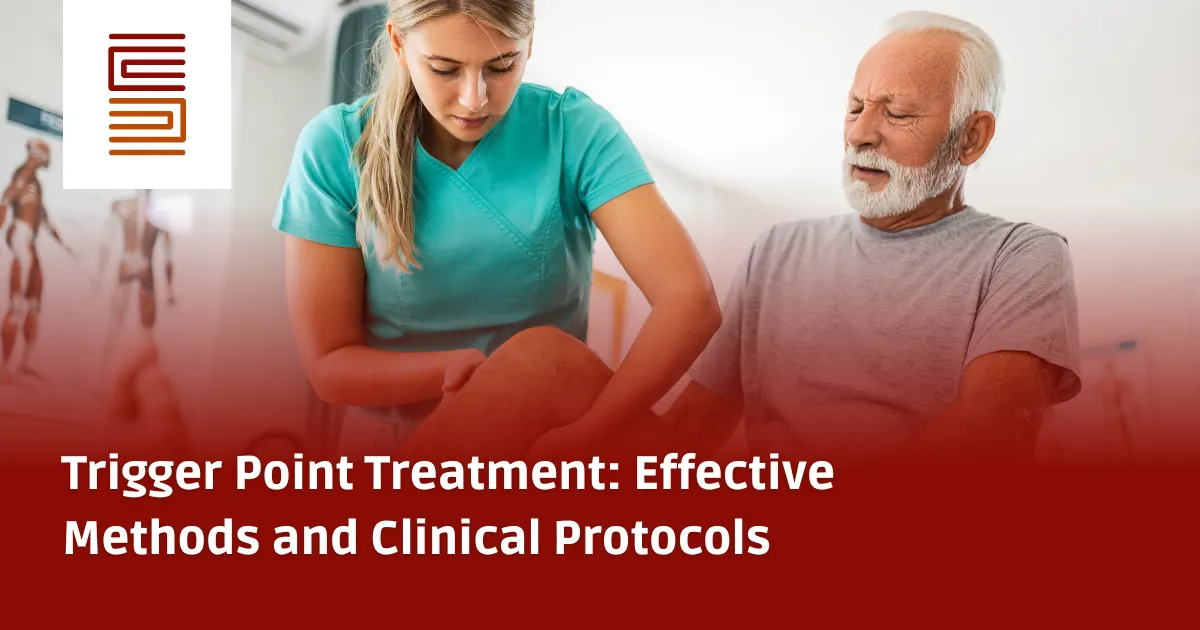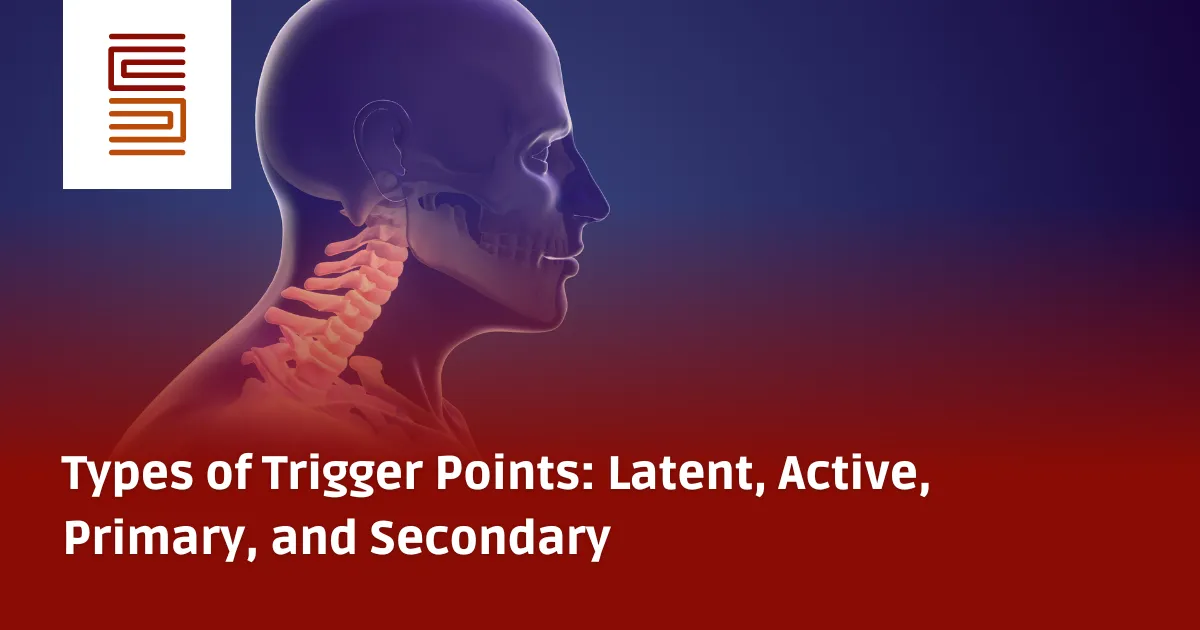Trigger Point Pathophysiology: How the Nervous System is Affected
Learn how trigger points affect the nervous system, leading to referred pain, muscle inhibition, nerve entrapment, and somato-visceral disturbances.
The Nervous System’s Role in Trigger Point Dysfunction
While trigger points are often discussed in relation to muscular dysfunction, they are fundamentally a nervous system phenomenon.
Trigger points do not only create local muscle pain and stiffness—they also alter nerve function, leading to referred pain, abnormal nerve signaling, and motor dysfunction.
How Trigger Points Affect the Nervous System
The local energy crisis caused by a trigger point affects both the muscle and its nerve supply. The accumulation of metabolic waste in the affected area sensitizes nearby sensory and autonomic nerves, leading to neurological symptoms beyond the trigger point itself.
This aberrant nerve stimulation is believed to cause many of the symptoms associated with trigger points, including:
✔ Local tenderness – Increased sensitivity at the trigger point site.
✔ Referred pain – Pain radiating to other areas, often mimicking nerve impingement conditions.
✔ Referred muscle inhibition and spasm – Weakened or involuntary contractions in muscles connected to the affected nerve.
✔ Somato-visceral disturbances – Potential disruption of organ function due to altered nerve signaling.
✔ Local twitch response – An involuntary contraction triggered by pressing on an active trigger point.
Nerve Entrapment Due to Trigger Points
As muscle tension increases, it can compress or entrap nearby nerves as they pass through the region. This can lead to:
✔ Pain – Persistent nerve compression can create chronic discomfort or sharp, radiating pain.
✔ Paresthesia – Numbness, tingling, or “pins and needles” sensations in the affected limb.
✔ Motor impairment – Weakness or difficulty controlling movement due to disrupted nerve signaling.
A common example of this is sciatic nerve compression caused by the piriformis muscle (Piriformis Syndrome), where tight muscles irritate or trap the sciatic nerve, leading to sciatica-like symptoms such as pain, tingling, and numbness in the leg.
Somato-Visceral Disturbances and Referred Pain
The nervous system regulates both muscular and organ function. When a trigger point disrupts nerve signaling, it can contribute to somato-visceral disturbances, where muscle dysfunction influences internal organ activity.
For example:
- Trigger points in the upper trapezius may contribute to headaches and jaw pain.
- Dysfunction in the diaphragm muscle may cause breathing difficulties or digestive discomfort.
- Lower back trigger points may create pelvic pain or bowel irregularities.
Why Treating the Nervous System is Crucial in Trigger Point Therapy
Because trigger points are not just muscle knots but neurological dysfunctions, effective treatment must address both muscle tension and nerve health.
Treatment Strategies for Trigger Point-Related Nerve Dysfunction
✔ Manual Therapy & Myofascial Release – Releases muscle tension and reduces nerve entrapment.
✔ Stretching & Nerve Mobilization Exercises – Helps improve nerve glide and restore normal function.
✔ Chiropractic Adjustments & Postural Correction – Aligns the body to prevent chronic nerve compression.
✔ Trigger Point Dry Needling – Stimulates muscle and nerve function to break dysfunctional cycles.
✔ Heat and Cold Therapy – Reduces inflammation and improves circulation to the affected nerves.
How NMSN Supports Neuromuscular Health
At New Mexico Support Network (NMSN), we provide expert care to help individuals manage chronic pain, nerve dysfunction, and trigger point-related conditions.
✔ Home Care Services – Supporting individuals with chronic muscle and nerve pain.
✔ Hospice Care Assistance – Providing pain relief and comfort for individuals with long-term conditions.
Take Control of Your Neuromuscular Health
If you are struggling with nerve pain, muscle tightness, or movement restrictions, addressing trigger point dysfunction can help restore normal function and reduce discomfort.
For professional care, contact New Mexico Support Network today.
Email: care@nmsupport.com
Phone: +1 833-773-0033 or +1 575-449-2009
Visit: New Mexico Support Network




